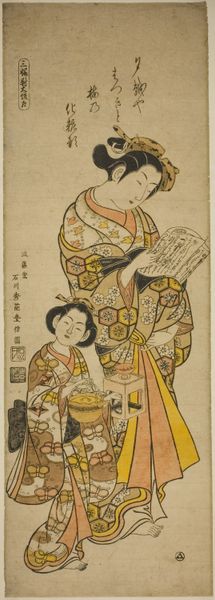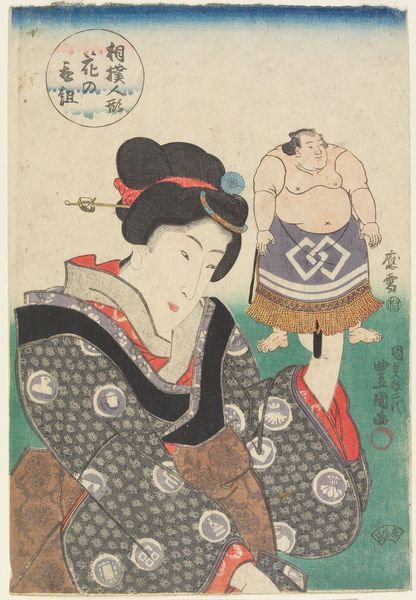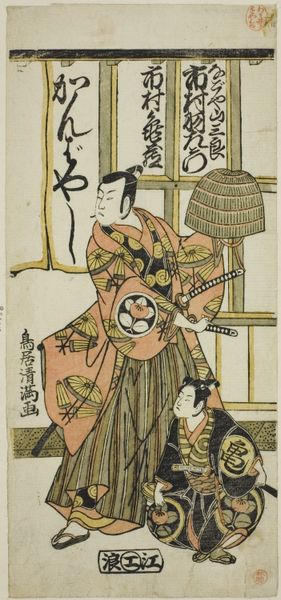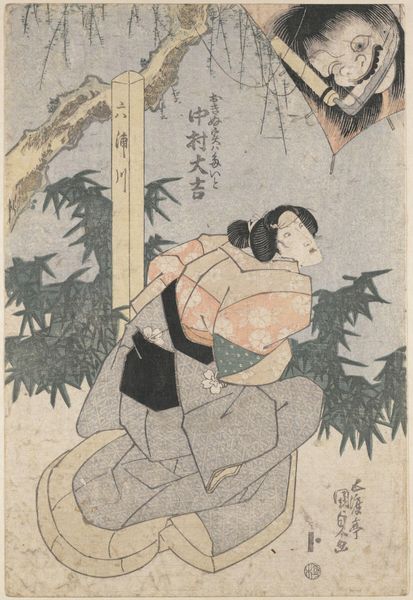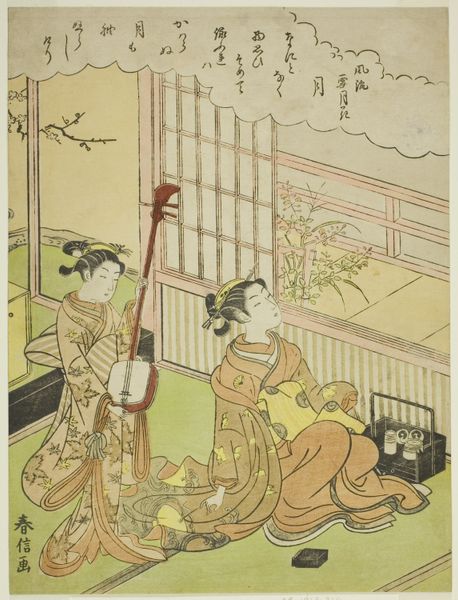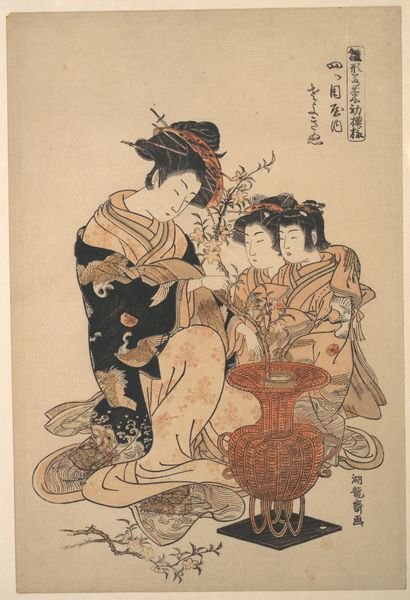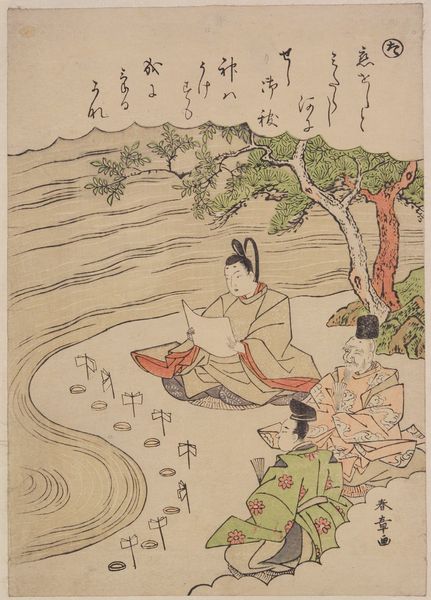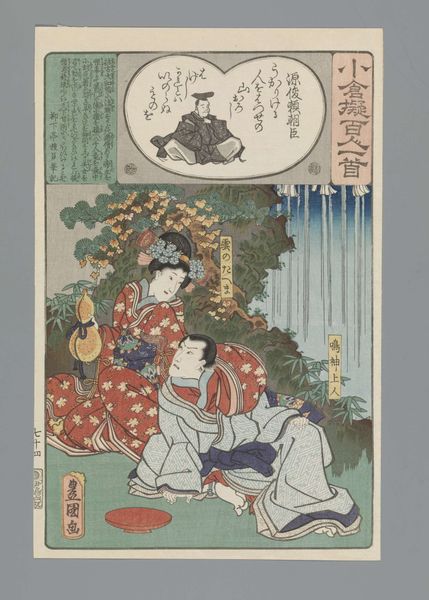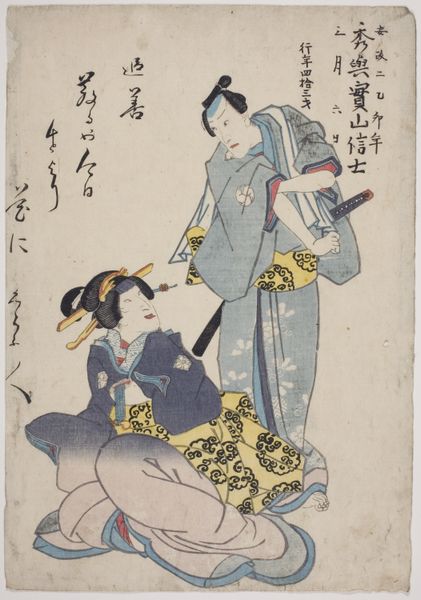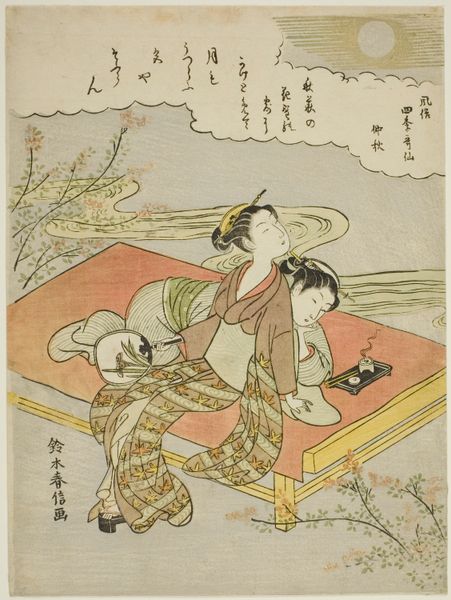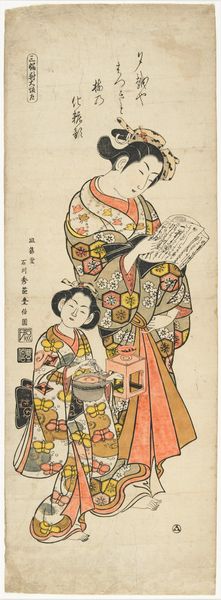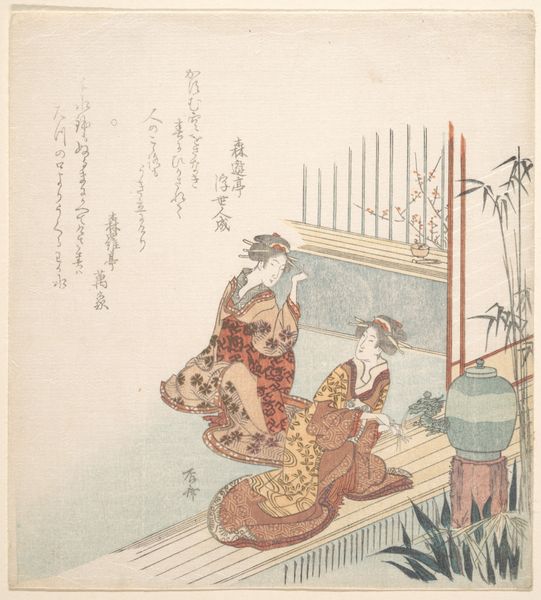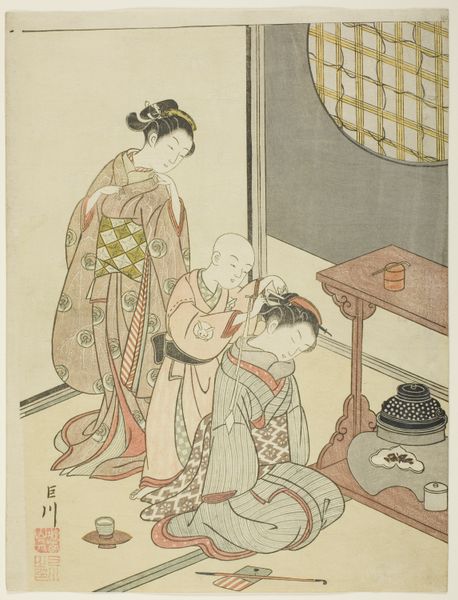
print, ink, woodcut
# print
#
asian-art
#
ukiyo-e
#
japan
#
figuration
#
ink
#
woodcut
#
genre-painting
Dimensions: 14 3/4 × 9 5/8 in. (37.4 × 24.4 cm) (image, sheet, vertical ōban)
Copyright: Public Domain
Editor: Here we have Kitagawa Utamaro's "The Second Son," a woodblock print in ink and color from around 1805. I’m struck by the contrast between the composed, almost melancholic, expression of the mother and the...well, slightly unsettling depiction of the child preparing a bird. How do you interpret the formal arrangement of the figures and objects in this piece? Curator: It is important to consider the picture plane. The artist sets the mother in the upper-ground, and situates the son and their domestic work into the immediate foreground. The hanging cooking pot is adjacent to the son's labors, but distanced from his physical agency; the son exists between it and a still life, the bird he is presumably preparing for dinner. There is an obvious binary to unpack. Utamaro creates a structural and formal opposition between female tranquility and the visceral character of labor that is rather pronounced. Editor: So the composition emphasizes a clear separation and contrast through its structure and pictorial logic. The line of sight seems to reinforce that – the mother looks downward but not directly at the child. Is there any semiotic value to their gaze? Curator: Indeed. The mother's gaze, averted but internal, contrasts the son's practical involvement with their source of nourishment. Consider also the treatment of line and color. Note how the flowing lines of the mother's hair and robe are countered by the more angular and geometric lines describing the child's body and cutting board. These graphic cues highlight the formal divisions that define the subjects, their labors, and ultimately, the artist's theme. Editor: It’s fascinating how much visual information is conveyed simply through line and arrangement. I never would have considered that initial contrast as deliberate. Curator: Formalism provides an analytical framework by which such observations can be extracted through semiotics and the process of elimination. Ultimately, one decodes the theme by tracing its forms. Editor: That’s a good point. Focusing on the artist’s formal choices really does open up new possibilities for understanding a work. Thank you.
Comments
No comments
Be the first to comment and join the conversation on the ultimate creative platform.
